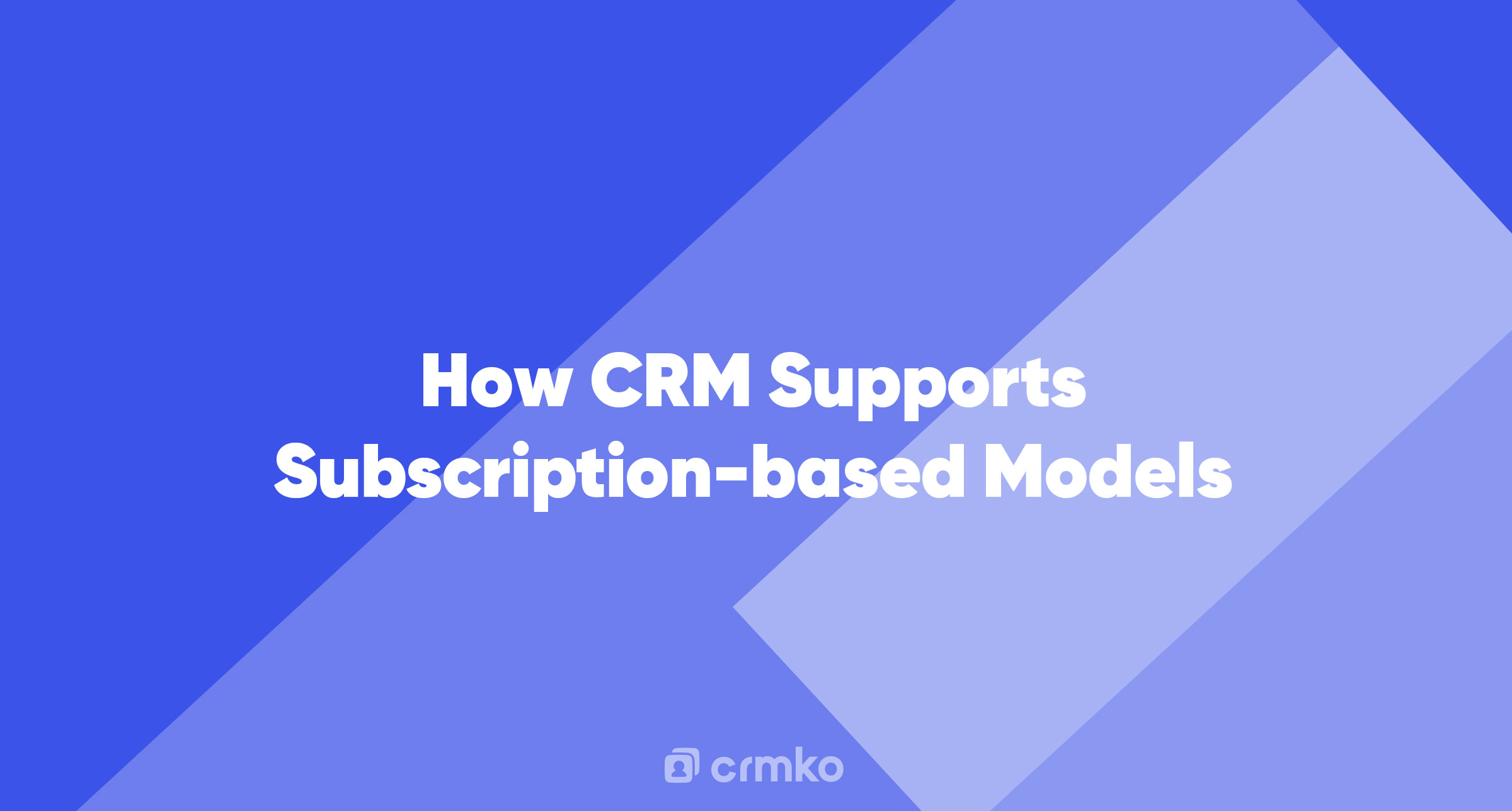CRM systems have evolved to meet the needs of businesses operating in the subscription economy. These systems provide a comprehensive set of tools and functionalities that enable organizations to effectively manage their subscriptions, enhance customer relationships, and drive growth. In this article, we will explore how CRM supports subscription-based models and the numerous benefits it offers to businesses.
CRM systems have evolved to meet the needs of businesses operating in the subscription economy. These systems provide a comprehensive set of tools and functionalities that enable organizations to effectively manage their subscriptions, enhance customer relationships, and drive growth. In this article, we will explore how CRM supports subscription-based models and the numerous benefits it offers to businesses.
Understanding Subscription-based Models
Before diving into the ways CRM supports subscription-based models, let's first define what these models entail. Subscription-based models involve customers paying a recurring fee at regular intervals to gain access to a product or service. This could be a monthly, quarterly, or yearly subscription, depending on the business offering. The key characteristic of subscription-based models is that customers have an ongoing relationship with the business, extending beyond a one-time transaction.
Subscription-based models have gained popularity due to their ability to provide a predictable revenue stream, build customer loyalty, and offer convenience to customers. However, managing these models and ensuring customer satisfaction throughout their subscription lifecycle can be challenging without the right tools and systems in place. This is where CRM comes in.
The Role of CRM in Subscription Management
CRM systems play a crucial role in supporting and optimizing subscription-based models. These systems provide a centralized platform for businesses to manage customer relationships, track subscription details, and automate key processes. Let's explore the different ways CRM empowers subscription-based models:
1. Streamlining Subscription Management Processes
CRM systems enable businesses to streamline and automate various subscription management processes. From the initial sign-up to renewal and cancellation, CRM systems can handle the entire customer lifecycle seamlessly. By capturing and organizing customer data, CRM systems allow businesses to track subscription details, monitor customer preferences, and ensure timely renewals and payments.
2. Personalizing the Customer Experience
One of the key benefits of CRM systems in subscription management is their ability to personalize the customer experience. By capturing and analyzing customer data, CRM systems enable businesses to understand customer preferences, behaviors, and needs. This data-driven approach allows businesses to personalize their offerings, recommend relevant products or services, and deliver targeted marketing messages to enhance customer satisfaction and retention.
3. Managing Subscription Pricing and Billing
CRM systems provide businesses with the necessary tools to manage subscription pricing and billing effectively. These systems can handle complex pricing structures, including tiered pricing, promotional offers, and discounts. CRM systems also integrate with payment gateways, allowing for seamless and secure payment processing. By automating billing processes, CRM systems ensure accurate and timely invoicing, reducing the risk of billing errors and improving the overall customer experience.
4. Enhancing Customer Support and Communication
CRM systems enable businesses to provide exceptional customer support throughout the subscription lifecycle. By centralizing customer data and interactions, CRM systems empower support teams to access relevant information quickly, resolve customer issues efficiently, and provide personalized assistance. Additionally, CRM systems facilitate communication with customers through various channels, such as email, chat, or social media, ensuring timely and relevant communication.
5. Analyzing Subscription Metrics and KPIs
CRM systems offer robust reporting and analytics capabilities, allowing businesses to gain valuable insights into their subscription-based models. These systems provide real-time visibility into key subscription metrics and KPIs, such as churn rate, customer lifetime value, and subscription growth. By analyzing these metrics, businesses can identify trends, make data-driven decisions, and optimize their subscription strategies for better customer retention and revenue growth.
6. Integrating with Other Business Systems
CRM systems can integrate with other essential business systems, such as accounting, marketing automation, and customer support platforms. These integrations enable seamless data flow between different systems, eliminating manual data entry and ensuring data accuracy. For example, integrating CRM with accounting systems enables automated revenue recognition and financial reporting for subscription-based models.
7. Supporting Scalability and Growth
As businesses scale and expand their subscription-based models, CRM systems provide the scalability and flexibility required to manage growing customer bases. CRM systems can handle large volumes of customer data, automate processes, and accommodate complex pricing structures. This scalability allows businesses to focus on driving growth while ensuring a seamless customer experience.
Case Studies: How CRM Supports Subscription-based Models
To further illustrate the benefits and effectiveness of CRM in supporting subscription-based models, let's explore a few case studies:
Case Study 1: Netflix
Netflix, a leading streaming service provider, has built its success on a subscription-based model. CRM plays a crucial role in managing millions of customer subscriptions and personalizing the user experience. By leveraging customer data, Netflix recommends tailored content, sends targeted promotions, and ensures smooth billing and account management, all powered by their CRM system.
Case Study 2: Dollar Shave Club
Dollar Shave Club, a subscription-based grooming product provider, relies on CRM to deliver a personalized and convenient experience to its customers. Through their CRM system, Dollar Shave Club captures customer preferences, sends targeted product recommendations, and automates subscription renewals. CRM enables them to maintain strong customer relationships and drive customer loyalty.
Conclusion
In today's subscription economy, CRM systems have become essential tools for businesses looking to optimize their subscription-based models. By streamlining subscription management processes, personalizing the customer experience, managing pricing and billing, enhancing customer support, analyzing subscription metrics, integrating with other systems, and supporting scalability, CRM empowers businesses to drive growth, improve customer retention, and achieve success in the subscription-based market.
To stay competitive in the evolving business landscape, organizations should consider adopting a CRM system that aligns with their subscription-based model and supports their unique needs. By harnessing the power of CRM, businesses can effectively manage their subscriptions, nurture customer relationships, and thrive in the subscription economy.
